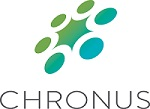ATD Blog
How Reverse Mentoring Supports Your DEI Goals
Tue Mar 22 2022

In response to the focus on parity in the workplace, many companies pledged to act and promote more diverse and equitable workforces. Fusing this social pressure with research from organizations like McKinsey & Company that showcase the business impact of prioritizing DEI, organizations vowed to carry the momentum well into 2022.
But progress is slow. Businesses still struggle to establish effective DEI work environments, and the makeup of global leadership pipelines has only started to change. According to a PwC survey, 76 percent of organizations say DEI is a priority, while only 26 percent have DEI goals for their leaders.
It’s not surprising then that most DEI initiatives aren’t making a dent in this current state.
If the past two years were the time of making commitments, then this must be the year of action. For DEI to penetrate leadership roles, middle management, and new hires, organizations need to find new inroads for DEI to get into the organizational goals. Because the pipeline won’t change overnight, organizations need a new approach.
Why Reverse Mentoring Is Key for DEI
As companies struggle to attract, retain, and advance diverse talent, many have turned to mentoring as a powerful strategy. There are countless benefits to standard mentoring formats, but to meet DEI objectives, it’s best to put the power of mentoring directly into the hands of an underrepresented employee.
That’s where reverse mentoring comes in.
What is reverse mentoring? In a typical reverse mentoring program, young employees mentor older, more seasoned employees. This isn’t just about young workers teaching senior business professionals the ins and outs of TikTok. Instead, this format encourages mutual learning and gives each participant the belief that their perspective matters at an organizational level.
This can increase retention, promote advancement, and help senior executives become more aware of cultural and systemic issues within their own organization. By having a younger employee mentor an older one, senior leaders are exposed to more diverse perspectives to help them become aware of and better understand cultural differences, business challenges, and evolving customer needs.
Fosters a Sense of Belonging
Feeling isolated or unseen can directly affect diverse populations within any organization. Employee retention and productivity are at higher risk when these feelings begin to creep into your employees’ day-to-day. Research from EY shows that when people feel like they belong, they are more productive, motivated, and engaged.
Reverse mentoring fosters a sense of belonging and supports each participant’s growth. Allowing juniors to share their ideas with leadership directly builds up their confidence. In addition, it nurtures a collaborative and equitable workforce, which makes them feel like they are valued and encourages them to express their views. As a result, employees start to believe they are working for an organization they want to be a part of for the long term.
Blending cultural and organizational bonds through mentoring is a practice that’s invaluable as each participant is encouraged to share insight despite any cultural, professional, or administrative barriers.
Disrupts Traditional Power Structures
Organizational power structures influence how employees behave and interact with one another. The way they talk, create, share ideas, and engage in conflict is all swayed by the hierarchy established within companies. As a result, historical power structures can limit creativity and collaboration, especially as it pertains to advancing and promoting underrepresented minorities. This ultimately impacts business outcomes and the productivity of its people because, as we know, companies in the top quartile for diversity on executive teams are 25 percent more likely to have above-average profitability than their industry peers.
Innovation is a product of creativity. Creativity is born through freedom of expression. To foster a culture where the freedom to share perspectives is encouraged, employers must think of a new way to build relationships with their people.
Because of its unorthodox format, reverse mentoring is a vessel for disrupting the norm. This mentoring format ignites participants to get outside of their comfort zones and share their thoughts, beliefs, and experiences. From here, organizations are given granular data that can help them identify the blockers that impede their people from performing their best and recognizing others’ talents. As a result, traditional power structures that once impeded innovation can be diminished or dismantled.
Encourages New Perspectives
If done right, reverse mentoring can enable diverse perspectives to permeate the organization. Cultivating progressive innovation is imperative within the workplace because of its ability to drive new and previously overlooked perspectives.
For reverse mentoring to be effective, participants need to feel supported from the top down. Just because an employer enacts a reverse mentoring program where junior employees give older employees feedback doesn’t mean that those involved will automatically feel comfortable with the situation. The program must prepare, train, and assist participants to receive constructive criticism and express opinions on sensitive topics. Reverse mentoring is a two-way professional development strategy. As the relationship grows, so will comfortability and trust.
Leveraging a reverse mentoring program can help leaders significantly increase their understanding, awareness, and appreciation of differences while empowering emerging diverse leaders. And sharing raw ideas and knowledge will drive the mentoring program and the organization further into the realm of a diverse, equitable, and inclusive workplace.

